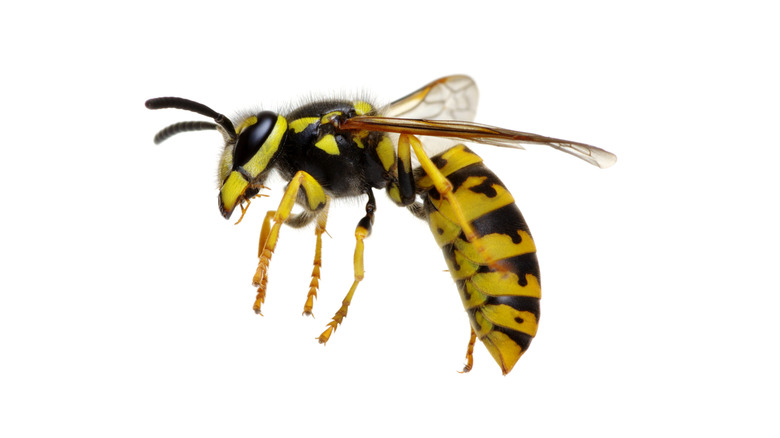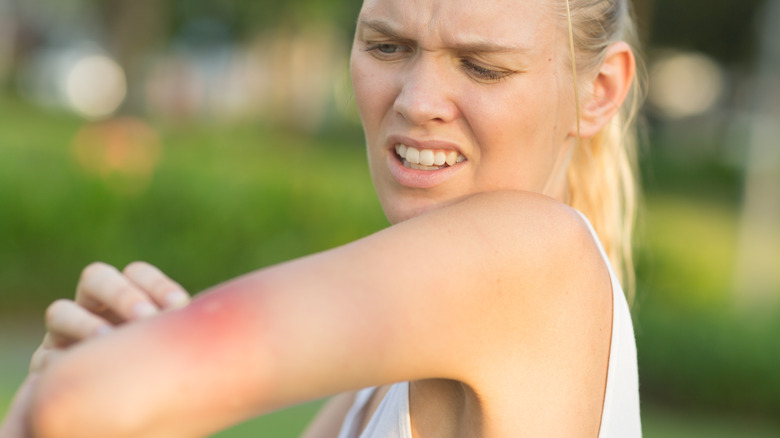The First Thing You Should Do When You Get A Wasp Sting
Wasp stings can be painful but there's generally no reason to panic. Sting reactions are often mild, and for most people, the initial pain doesn't last for long (via Healthline). Like bees, wasps have a stinger that contains venom to protect themselves. This poisonous substance can be passed to humans when they are stung.
After being stung by a wasp, it's important to first keep the affected area clean from dirt, so you'll want to wash the surrounding skin with soap and water. Thoroughly cleaning the area will also remove any harmful germs the wasp may have been carrying which will reduce the chance of infection (via WebMD). To reduce pain and swelling, apply an ice pack to the area every ten minutes over the course of an hour. Anti-inflammatory medications can also help with pain and swelling. If the sting site itches, apply an antihistamine cream or calamine lotion for some relief.
What to do if you have an allergic reaction
While redness, pain, and swelling are the most common symptoms of a wasp sting, some people may experience an allergic reaction (via Healthline). These individuals may experience worsening symptoms that last for a few days, sometimes accompanied by nausea and vomiting. Symptoms typically go away after a week or two, but be sure to talk to your doctor to find the best treatment option.
It's also possible to develop anaphylaxis after a wasp sting. Symptoms of anaphylaxis include severe swelling of the face, lips, or throat, hives, difficulty breathing, dizziness, sudden drop in blood pressure, racing pulse, and loss of consciousness. If you or someone you're with is experiencing anaphylaxis, it's important to seek emergency medical care immediately. If you know you are severely allergic to bee or wasp stings, make sure to always carry Epinephrine (an EpiPen) with you that you can use should you get stung unexpectedly.


